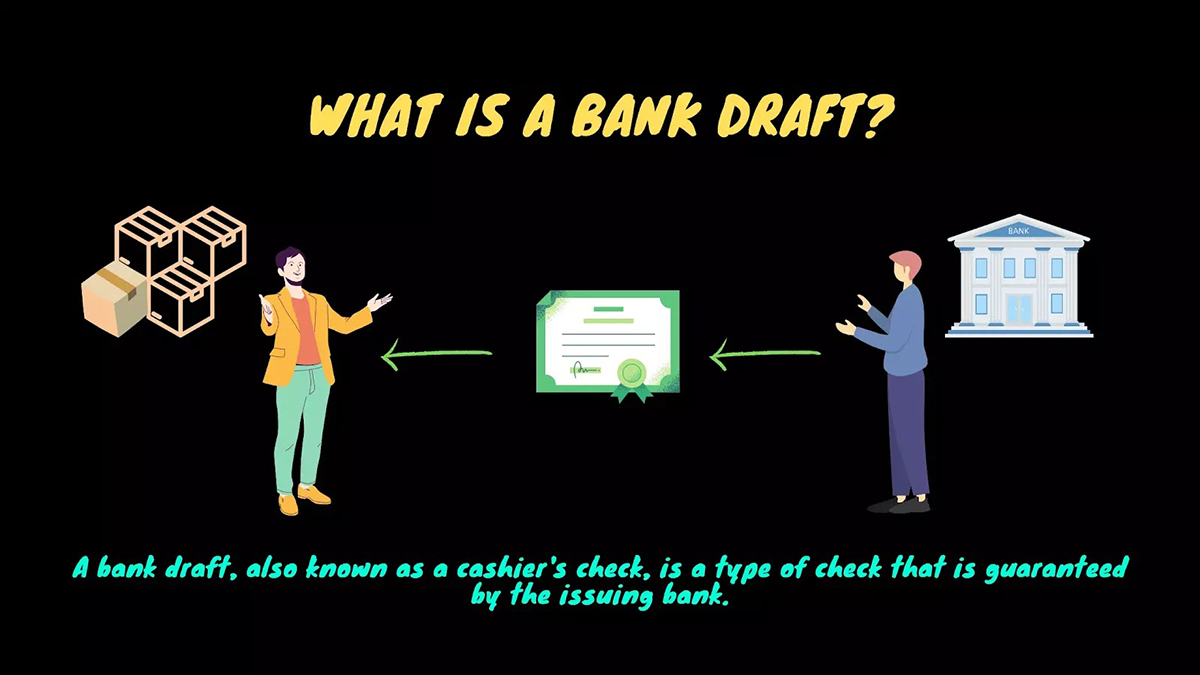Home>Finance>How Can You Reduce The Total Cost You Might Pay For Your Student Loan?


Finance
How Can You Reduce The Total Cost You Might Pay For Your Student Loan?
Modified: February 21, 2024
Looking to save on your student loan payments? Discover effective strategies to reduce the overall cost of your student loan with our finance tips.
(Many of the links in this article redirect to a specific reviewed product. Your purchase of these products through affiliate links helps to generate commission for LiveWell, at no extra cost. Learn more)
Table of Contents
- Introduction
- Understanding the Total Cost of Your Student Loan
- Exploring Ways to Reduce the Total Cost
- Making Timely Payments
- Opting for Auto-Pay
- Considering Refinancing or Consolidating Loans
- Making Extra Payments
- Taking Advantage of Loan Forgiveness Options
- Seeking Employer Assistance
- Exploring Income-Driven Repayment Plans
- Avoiding Unnecessary Fees and Penalties
- Conclusion
Introduction
Student loans have become a common financial burden for many individuals pursuing higher education. While these loans provide the necessary funds to cover tuition fees and other educational expenses, they can also come with a significant cost over time. The total cost of a student loan includes not only the principal amount borrowed but also the accumulated interest and other fees.
Reducing the total cost of your student loan is essential to minimize the financial impact and achieve long-term financial stability. By implementing effective strategies, you can potentially save thousands of dollars over the life of your loan. In this article, we will explore various ways to reduce the total cost you might pay for your student loan.
From making timely payments to considering loan refinancing or consolidation, there are several methods to lower the financial burden of your student loan. By understanding the options available and taking proactive steps, you can take control of your finances and save money in the process.
It’s important to note that while reducing the total cost of your student loan is beneficial, it’s equally crucial to prioritize making your monthly payments to avoid defaulting on your loan. This will protect your credit score and ensure a positive financial future.
Now, let’s delve into the different strategies you can employ to minimize the total cost of your student loan.
Understanding the Total Cost of Your Student Loan
Before diving into the strategies to reduce the total cost of your student loan, it’s essential to understand how the total cost is calculated. The total cost of a student loan is the sum of the principal amount borrowed, the interest charged on the loan, and any additional fees or charges.
The principal amount is the initial loan balance that you borrowed to finance your education. This amount, along with the interest rate, determines the baseline cost of your loan. The interest charged on your loan is the cost of borrowing the money and is calculated as a percentage of the outstanding loan balance.
Typically, student loans accrue interest while you are in school and during the grace period after graduation. Once the repayment period begins, the interest is added to the loan balance, increasing the total amount you owe. It’s important to note that the longer it takes to repay your loan, the more interest will accrue over time, resulting in a higher total cost.
In addition to the principal and interest, there may be other fees and charges associated with your student loan. These can include origination fees, late payment fees, and prepayment penalties. Understanding the terms and conditions of your loan agreement will help you identify any additional costs that may contribute to the total expense of your loan.
By understanding these components, you can take the necessary steps to reduce the total cost of your student loan. Now, let’s explore various strategies you can implement to save money and lower the financial burden.
Exploring Ways to Reduce the Total Cost
When it comes to reducing the total cost of your student loan, there are several strategies you can consider. By implementing these tactics, you can potentially save money and pay off your loan more efficiently. Let’s explore some of the most effective ways to reduce the total cost:
- Making Timely Payments: One of the most crucial steps you can take is to make your monthly loan payments on time. Late payments can lead to additional fees and penalties, increasing the overall cost of your loan. Setting up reminders or automatic payments can help you stay organized and avoid late payments.
- Opting for Auto-Pay: Many lenders offer an auto-pay option where your payments are automatically deducted from your bank account. By enrolling in auto-pay, you may qualify for interest rate discounts, further reducing the total cost of your loan.
- Considering Refinancing or Consolidating Loans: If you have multiple student loans, consolidating them into a single loan can simplify your repayment process and potentially lower your interest rate. Refinancing allows you to secure a new loan with a lower interest rate, potentially reducing your monthly payments and overall cost. However, it’s important to carefully evaluate the terms and conditions of the new loan before making a decision.
- Making Extra Payments: Whenever possible, consider making extra payments towards your student loan. These additional payments can help you pay down the principal balance faster, reducing the overall interest that accrues over time. Even small additional payments can make a significant impact over the life of your loan.
- Taking Advantage of Loan Forgiveness Options: Depending on your career path, you may be eligible for loan forgiveness programs. These programs offer partial or complete forgiveness of your student loan debt in exchange for working in certain professions or qualifying public service positions. Research and explore if you qualify for any loan forgiveness programs that can help reduce your total loan cost.
- Seeking Employer Assistance: Some employers offer student loan repayment assistance as part of their employee benefits package. This can help you save money on your loan payments and reduce the overall cost. Check with your employer to see if they provide any student loan assistance programs.
- Exploring Income-Driven Repayment Plans: Income-driven repayment plans adjust your monthly loan payments based on your income and family size. These plans can help make your payments more manageable, reducing the financial burden of your loan. They may also offer loan forgiveness options after a certain number of years of consistent payments.
- Avoiding Unnecessary Fees and Penalties: Be mindful of any fees or penalties associated with your loan. Avoid late payments, as they can result in additional charges. Read and understand your loan agreement to ensure you are aware of any potential fees and take necessary steps to avoid them.
Implementing one or a combination of these strategies can significantly reduce the total cost of your student loan. Remember to assess your financial situation, consider your long-term goals, and choose the approaches that align with your needs. By taking proactive steps, you can successfully manage your student loan debt and achieve financial freedom.
Making Timely Payments
Making timely payments is one of the most important actions you can take to reduce the total cost of your student loan. By consistently making your monthly loan payments on time, you can avoid penalties and additional fees that can add up over time.
Late payments not only result in late fees, but they can also have a negative impact on your credit score. A lower credit score can make it more challenging for you to secure favorable interest rates on future loans or credit cards. Therefore, it’s crucial to prioritize making your student loan payments by the due date each month.
Missing even one payment can have far-reaching consequences. Lenders may charge late payment fees, typically a percentage of the overdue amount, which can increase the total cost of your loan. Additionally, some lenders may even report late payments to credit bureaus, negatively affecting your credit history.
To ensure timely payments, consider various strategies:
- Set Up a Payment Schedule: Create a monthly payment schedule that includes the due dates for your student loan payments. This will help you stay organized and ensure you never miss a payment.
- Set up Automatic Payments: Enroll in automatic payments through your loan servicer or bank. By setting up automatic payments, the designated amount will be deducted from your bank account on the due date, ensuring you never miss a payment. Some lenders may even offer a small interest rate reduction for borrowers who use auto-pay.
- Set Payment Reminders: If you prefer manual payment processing, set up reminders on your phone, calendar, or email to alert you a few days before the due date. This will serve as a helpful reminder to make your payment on time.
- Adjust Your Budget: Review your monthly budget and allocate funds specifically for your student loan payment. By prioritizing your loan payment in your budget, you can ensure that the necessary funds are available each month.
Making timely payments not only reduces the total cost of your student loan, but it also demonstrates responsible financial behavior. It shows lenders that you are reliable and increases your chances of qualifying for favorable terms in the future.
Remember, consistency is key. By establishing good payment habits early on and maintaining them throughout the life of your loan, you can significantly reduce the overall expense and pay off your student loan more efficiently.
Opting for Auto-Pay
Opting for auto-pay is a convenient and effective way to reduce the total cost of your student loan. Many lenders offer an auto-pay option, where your monthly payments are automatically deducted from your bank account on the due date. This automated process not only saves you time and hassle but also comes with potential benefits that can help lower your loan cost.
Here are some advantages of opting for auto-pay:
- Interest Rate Reduction: Many lenders provide borrowers with an incentive to sign up for auto-pay by offering a slight reduction in the interest rate. This discount, which is usually around 0.25%, may seem small, but it can add up to significant savings over the life of your loan.
- On-Time Payments: With auto-pay, you can ensure that your payments are made on time, every time. Late payments not only incur fees but can also negatively impact your credit score. By enrolling in auto-pay, you eliminate the risk of forgetting to make a payment and avoid potential penalties.
- Convenience and Peace of Mind: Auto-pay saves you the hassle of manually processing payments each month. Once you set up automatic payments, you can relax knowing that your payments will be made reliably and without any effort on your part. This convenience allows you to focus on other aspects of managing your finances.
To enroll in auto-pay, follow these steps:
- Contact your loan servicer or lender: Reach out to your loan servicer or lender to inquire about their auto-pay options. They will guide you through the process and provide instructions on how to set it up.
- Provide your bank account information: You will need to provide your bank account details, including the account number and routing number, to authorize the automatic deduction of your monthly payments.
- Set the payment frequency: Choose the frequency at which you want your payments to be made. Typically, you can select monthly, bi-monthly, or quarterly payments, depending on your preference and financial capability.
- Confirm and review: Double-check all the information you provided before finalizing the auto-pay setup. Ensure that your bank account details are accurate to avoid any issues with the payment process.
It’s important to monitor your bank account and loan statements after enrolling in auto-pay to ensure that the payments are being processed correctly. Regularly review your loan account to verify that the correct payment amounts are being deducted and that your loan balance is being reduced accordingly.
Remember, while auto-pay is a convenient option, it’s still essential to stay informed about your loan details and maintain sufficient funds in your bank account to cover the monthly payments. Keep an eye on your finances and make adjustments as necessary to ensure a smooth and trouble-free loan repayment process.
Considering Refinancing or Consolidating Loans
If you have multiple student loans, considering refinancing or consolidating them can be an effective strategy to reduce the total cost of your loans. Both options involve combining and restructuring your loans to simplify the repayment process and potentially lower your interest rates.
Loan Consolidation:
Loan consolidation involves combining multiple federal student loans into a single loan, known as a Direct Consolidation Loan, through the U.S. Department of Education. By consolidating your loans, you can streamline your payments, as you’ll only have one loan to manage, reducing the likelihood of missed or late payments.
While loan consolidation doesn’t typically lower your interest rate, it can make your monthly payment more manageable by extending the repayment term. However, be aware that extending the repayment term may result in paying more interest over the life of the loan.
Loan Refinancing:
Loan refinancing involves replacing one or more existing loans with a new loan from a private lender. When you refinance, you have the opportunity to secure a lower interest rate based on your creditworthiness and financial circumstances.
Refinancing can save you money in two ways:
- Reduced Interest Rate: By refinancing your loans, you may qualify for a lower interest rate compared to your original loans. This can result in significant savings over the life of the loan.
- Consolidation and Simplification: Refinancing allows you to combine multiple loans into a single loan, simplifying your repayment process. This streamlined approach can make it easier to manage your monthly payments and avoid any confusion or missed payments.
Before deciding to refinance or consolidate your loans, consider the following:
- Research and compare offers from different lenders to find the best interest rates and terms that suit your financial goals.
- Review the terms and conditions of the new loan, including repayment options, fees, and any potential benefits you may be giving up, such as loan forgiveness or income-driven repayment plans.
- Assess your creditworthiness and financial situation to determine if you would qualify for a lower interest rate through refinancing.
- Consider the potential trade-offs, such as losing access to federal loan repayment options and benefits when refinancing federal student loans into a private loan.
Refinancing or consolidating your student loans can be a valuable tool for reducing the total cost of your loans. However, carefully evaluate the pros and cons and consider seeking advice from a financial advisor before making a decision. By weighing your options and being informed, you can make a choice that aligns with your financial goals and helps you save money in the long run.
Making Extra Payments
Making extra payments towards your student loan is a proactive strategy to reduce the total cost of your loan and pay it off faster. By allocating additional funds towards your loan balance, you can decrease the outstanding principal and ultimately save money on interest.
Here are some key points to consider when making extra payments:
- Targeting Principal Reduction: When you make an extra payment, specify that it should be applied to the principal balance of your loan. By doing so, you directly reduce the amount you owe, rather than simply prepaying interest. This helps decrease the total cost of your loan over time.
- Timing of Extra Payments: You have the flexibility to make extra payments at any time during the life of your loan. Whether it’s a lump sum payment or periodic additional payments, the earlier you start making extra payments, the greater impact they will have on reducing the total cost of your loan.
- Consider Paying More Than the Minimum: Making only the minimum required payment each month can prolong the repayment period and result in more interest being accrued. By consistently paying more than the minimum, you can pay off your loan faster and save on overall interest costs.
- Bonus and Windfall Cash: If you receive a bonus at work or come into some unexpected cash, consider putting a portion of it towards your student loan. This can make a significant dent in your loan balance and accelerate your path to repayment.
- Set a Goal: Establish a target for when you want to pay off your student loan. Having a specific goal in mind can motivate you to make extra payments and stay committed to reducing the total cost of your loan.
- Create a Budget: Review your monthly budget and look for areas where you can cut back or reallocate funds towards your loan payment. This may require making small sacrifices in spending to prioritize reducing your loan balance.
- Consistency is Key: Making occasional extra payments is beneficial, but maintaining a consistent pattern of additional payments will yield greater long-term savings. Develop a strategy that suits your financial situation and stick to it throughout the repayment period.
Remember to communicate with your loan servicer or lender to ensure that any extra payments are properly applied to the principal balance. You can also specify this information in the payment instructions when making the extra payments.
Making extra payments requires careful planning and budgeting. Consider the impact on your overall financial health and ensure you have enough funds to cover other essential expenses and savings goals. Balancing your debt reduction efforts with your overall financial well-being is key to long-term financial stability.
By taking advantage of opportunities to make extra payments, you can accelerate your journey to becoming debt-free and significantly reduce the total cost of your student loan.
Taking Advantage of Loan Forgiveness Options
Loan forgiveness programs provide an opportunity to reduce or eliminate a portion of your student loan debt, ultimately lowering the total cost you would have to pay. These programs are designed to incentivize certain professions or encourage service in specific fields. If you meet the eligibility criteria, you may be able to receive partial or complete forgiveness of your student loan debt.
Here are several loan forgiveness options to consider:
- Public Service Loan Forgiveness (PSLF): The PSLF program is available to individuals who work full-time for a qualifying public service employer, such as government organizations or non-profit organizations. After making 120 qualifying monthly payments, the remaining loan balance may be forgiven. It’s crucial to understand and meet all the requirements of the PSLF program to ensure eligibility.
- Teacher Loan Forgiveness: Teachers who work in low-income schools or educational service agencies may qualify for teacher loan forgiveness. Under this program, eligible teachers can receive loan forgiveness of up to a certain amount, depending on the subject they teach and the number of years of service.
- Income-Driven Repayment (IDR) Forgiveness: Income-driven repayment plans, such as Income-Based Repayment (IBR), Pay As You Earn (PAYE), and Revised Pay As You Earn (REPAYE), offer loan forgiveness after a certain number of years of consistent qualifying payments. The remaining loan balance may be forgiven, although it is essential to understand the tax implications of forgiven amounts.
- Loan Forgiveness Programs for Healthcare Professionals: Various loan forgiveness programs are available for healthcare professionals who work in underserved or rural areas. For example, the National Health Service Corps (NHSC) offers loan repayment assistance to healthcare providers who agree to work in areas with limited access to healthcare.
- Loan Forgiveness for Military Service: Members of the military may be eligible for various loan forgiveness programs, including the Public Service Loan Forgiveness program and specific loan repayment programs for military service, such as the Army Student Loan Repayment Program or the Navy Student Loan Repayment Program.
Each loan forgiveness program has its own set of eligibility requirements, qualifying criteria, and application processes. It’s crucial to thoroughly research and understand the terms of each program and determine if you meet the necessary qualifications.
Keep in mind that pursuing loan forgiveness options may require a long-term commitment, and it’s essential to stay informed about any changes to the program requirements or policies. Maintain accurate records of your employment and loan repayment activities to ensure you are on track for forgiveness.
Loan forgiveness can significantly reduce the total cost of your student loan, but it’s important to carefully consider the potential trade-offs and implications. Explore these options and determine if they align with your career goals and financial situation to take advantage of these valuable opportunities to reduce your loan burden.
Seeking Employer Assistance
If you are fortunate enough to work for an employer that offers student loan assistance as part of their employee benefits package, taking advantage of this assistance can help you reduce the total cost of your student loan. Employer-sponsored repayment programs are becoming increasingly common as employers recognize the financial burden of student loans on their employees.
Here are some ways to seek employer assistance for your student loans:
- Research Employer Programs: Research and inquire about any existing student loan assistance programs offered by your employer. Check with your human resources department or review your employee benefits package to determine if they provide any assistance, such as direct loan payments or matching contributions.
- Understand the Terms and Conditions: Familiarize yourself with the terms and restrictions of your employer’s assistance program. Some employers may require you to work for a certain period or in a specific role to qualify for student loan assistance.
- Maximize the Benefits: If your employer offers a matching contribution program, contribute the maximum amount allowed to receive the full benefit. This extra contribution can help reduce the outstanding loan balance and ultimately save you money on interest.
- Explore Employee Benefits Negotiation: When applying for new job opportunities, consider negotiating for student loan repayment assistance as part of your compensation package. Depending on the employer and the industry, they may be willing to offer this benefit or include it as a potential bargaining chip in the negotiation process.
- Stay Informed: Stay updated on any changes or updates to your employer’s student loan assistance program. Employers may modify or expand their offerings over time, so regularly checking for updates will ensure you maximize the benefits available to you.
Employer assistance can provide a significant boost in your efforts to reduce the total cost of your student loan. By taking advantage of these programs, you can potentially accelerate your repayment journey and save on interest expenses.
It’s important to note that employer assistance is typically offered as a benefit, and it may be subject to certain tax implications. Consult with a tax professional or financial advisor to understand any tax considerations associated with your employer’s student loan assistance program.
By leveraging the support of your employer, you can receive valuable assistance in tackling your student loan debt and effectively reduce the total cost of your loan. Take the time to explore and utilize these benefits to their fullest extent.
Exploring Income-Driven Repayment Plans
Income-driven repayment (IDR) plans are a beneficial option for borrowers who are struggling to manage their monthly student loan payments. These plans adjust your monthly payments based on your income and family size, making them more affordable and manageable.
Here are some key points to consider when exploring income-driven repayment plans:
- Lower Monthly Payments: One of the main advantages of income-driven repayment plans is that they can significantly lower your monthly loan payments. Instead of being based on the standard repayment amount, your payments are determined by a percentage of your discretionary income.
- Extended Repayment Terms: Income-driven repayment plans also offer extended repayment terms, which can stretch up to 20 or 25 years. This longer repayment period helps reduce the amount you need to pay each month, but it may result in higher total interest paid over the life of the loan.
- Potential Loan Forgiveness: After the repayment period (usually 20 to 25 years), any remaining loan balance may be forgiven. However, it’s essential to note that the forgiven amount may be considered taxable income.
- Recertification: To remain on an income-driven repayment plan, you need to recertify your income and family size annually. This ensures that your monthly payments continue to reflect your current financial situation.
- Eligibility Requirements: Income-driven repayment plans are available for federal student loans, and eligibility is generally based on demonstrating a financial need. Different plans have specific requirements, so review each plan’s criteria to determine which one suits your circumstances best.
- Consider Long-Term Costs: While income-driven repayment plans offer short-term relief by reducing monthly payments, it’s important to consider the long-term costs. Since the repayment period is extended, you may end up paying more in total interest over the life of the loan compared to standard repayment plans.
It’s essential to carefully assess your financial situation and determine whether income-driven repayment plans are the best option for you. You can use online calculators or consult with a student loan expert to compare different repayment plans and calculate the potential savings.
Income-driven repayment plans can be a valuable tool for borrowers who are facing financial hardship or have a low income. By adjusting your payments based on what you can afford, these plans provide much-needed flexibility and can significantly reduce the total cost of your student loan over time.
Contact your loan servicer to discuss the various income-driven repayment options available to you. They can provide guidance on the best plan for your circumstances and help you navigate the application process.
Remember to stay informed about any updates or changes to income-driven repayment plans, as government regulations and policies may evolve over time. Regularly review your options to ensure you are making the most suitable choice for your financial situation.
Avoiding Unnecessary Fees and Penalties
Avoiding unnecessary fees and penalties is crucial in minimizing the total cost of your student loan. Being aware of the potential charges and taking proactive steps to prevent them can help you save money and stay on track towards repayment. Here are some strategies to avoid unnecessary fees and penalties:
- Know Your Repayment Terms: Familiarize yourself with the terms and conditions of your loan agreement. Understand the due dates, interest rates, and any potential fees or penalties that may be imposed for late payments or missed payments.
- Set Up Payment Reminders: Missing a payment due date can lead to late fees and penalties. Set up payment reminders through your calendar, phone, or email to ensure you never forget a payment. Timely payments are crucial in avoiding unnecessary charges.
- Prevent Default: Defaulting on your student loan can result in severe consequences, including additional fees, damage to your credit score, and even legal action. Make it a priority to stay current on your payments and explore alternative repayment options if you’re facing financial hardship.
- Consider Automatic Payments: Setting up automatic payments ensures your payments are made on time, eliminating the risk of late payment fees. Many lenders offer interest rate reductions or other incentives for borrowers who enroll in auto-pay.
- Budget for Extra Costs: Apart from the monthly loan payments, consider budgeting for additional costs such as origination fees, late payment fees, or any other charges associated with your loan. By being financially prepared, you can avoid being caught off guard and incurring unnecessary fees.
- Read and Understand Communications: Stay vigilant in reading all communications from your loan servicer or lender. This includes emails, letters, and other notifications regarding your loan. Stay informed about any changes in terms or policies that may impact your repayment or lead to additional fees.
- Communicate with Your Loan Servicer: If you face difficulty making payments or anticipate a potential default, reach out to your loan servicer promptly. They may be able to offer options such as deferment, forbearance, or alternative repayment plans that can help you avoid unnecessary fees and penalties.
- Regularly Review Your Statements: Regularly reviewing your loan statements allows you to monitor your loan activity, ensure accurate application of payments, and identify any discrepancies or errors that could lead to incorrect fees or penalties.
By staying proactive and informed throughout the repayment process, you can successfully avoid unnecessary fees and penalties, reducing the total cost of your student loan. Take the time to understand your loan terms, set up systems to stay organized, and communicate with your loan servicer to address any potential issues promptly.
Remember, minimizing extra costs is just as important as making regular payments. Consistently practicing good financial habits will not only save you money but also contribute to your overall financial well-being.
Conclusion
Navigating the world of student loans can be overwhelming, but with the right strategies, you can significantly reduce the total cost and achieve financial freedom more efficiently. By implementing the following tips, you can make a positive impact on your repayment journey:
- Making timely payments ensures you avoid late fees and protect your credit score.
- Opting for auto-pay can provide interest rate discounts and simplify the payment process.
- Considering loan refinancing or consolidation can lower interest rates and streamline repayment.
- Making extra payments towards your principal balance helps reduce the overall interest paid.
- Exploring loan forgiveness options can lead to partial or complete forgiveness of your loan debt.
- Seeking employer assistance allows you to leverage their support in paying off your student loans.
- Exploring income-driven repayment plans can make payments more manageable based on your income.
- Avoiding unnecessary fees and penalties helps minimize the total cost of your loan.
It’s important to evaluate these strategies considering your unique circumstances and financial goals. Research your options, understand the terms and conditions, and make informed decisions. Regularly review your repayment progress and adapt your strategies as needed to stay on track.
Remember, managing your student loan debt is a journey that requires consistency and perseverance. By taking control of your finances and implementing these strategies, you can reduce the financial burden of your student loan, save money, and pave the way for a brighter financial future.














